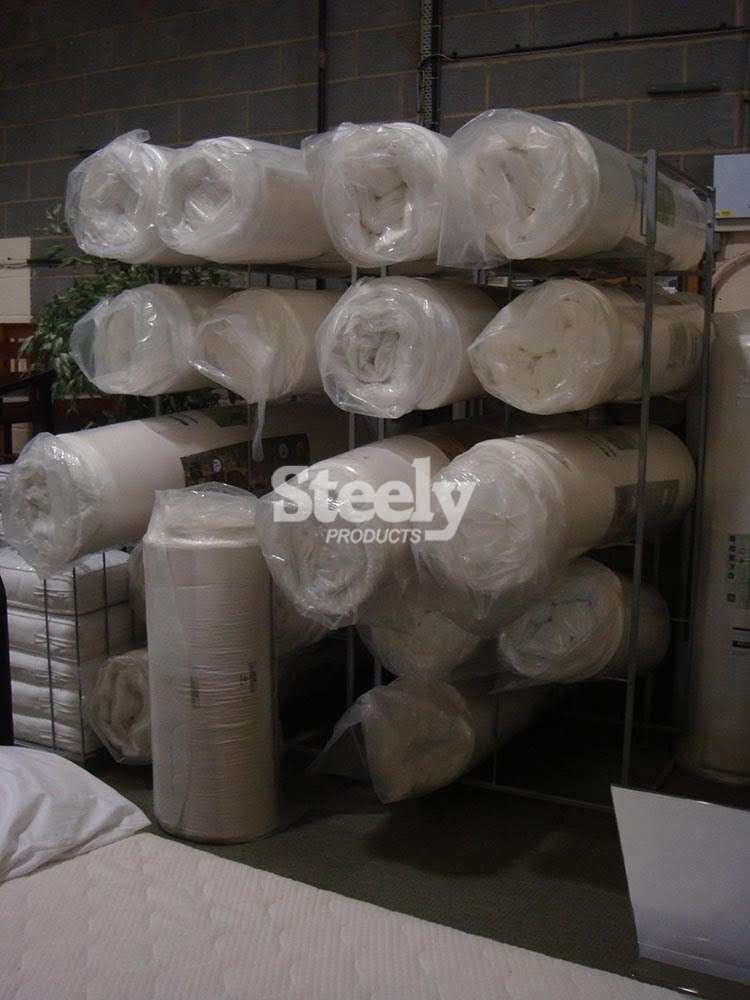Your basket is currently empty!

The backbone of warehouse operations in storage systems. These parts of a warehouse rely on structural integrity – both to do their job of providing secure storage, and for the safety of warehouse operatives.
Storage systems’ importance makes racking inspection a consideration for UK businesses. While racking inspection isn’t mandated by UK law in the same manner as fire safety systems, there is a relevant regulatory landscape. These regulations make it necessary for warehouse operators to implement comprehensive inspection regimes; and it’s these obligations that we’ll cover in this article.
The regulatory framework
The Health and Safety Executive (HSE) has established clear guidance regarding warehouse racking safety, even though these inspection requirements may not be set out as strict legal obligations.
Under the Provision and Use of Work Equipment Regulations 1998 (PUWER), employers bear responsibility for ensuring all work equipment, including racking systems, remains in a safe condition throughout its operational life. This regulation alone makes regular inspections a necessity for compliance.
There is also the HSE’s HSG76 guidance document, which provides the definitive framework for racking safety in the UK. This comprehensive guide strongly advises dual-tier inspection protocols. These may be annual assessments conducted by Storage Equipment Manufacturers Association (SEMA)-approved inspectors, in addition to regular internal inspections.
SEMA-approved inspections
SEMA has a network of qualified inspectors known as SEMA Approved Racking Inspectors (SARIs). These are professionals with specialised knowledge of racking systems, load calculations, and safety standards specific to warehouse environments.
Annual inspections by SARIs represent the gold standard for comprehensive racking assessment. They provide detailed evaluations of structural integrity and load capacity, as well as checks for compliance with current safety standards.
SARI inspections typically involve the examination of multiple aspects of racking systems, including frame condition, beam connections, bracing adequacy, and foundation stability.
Inspectors assess whether modifications or repairs might be necessary and consider whether the racking configuration remains appropriate for current usage patterns.
Internal inspection requirements
As we touched upon briefly above, regular internal inspections – as recommended by HSE guidance – will be conducted by employees with the technical competence to do so.
These individuals don’t have to be professional engineers, but they must possess sufficient training and knowledge to identify damage and wear, along with instances where racking systems may be being misused.
Many organisations implement internal inspections on a monthly or quarterly basis, depending on how busy their warehouse is.
The person responsible for racking safety
Every warehouse operation should designate a Person Responsible for Racking Safety (PRRS). This individual coordinates inspection activities, tracks maintenance tasks through to completion, and maintains records of all related safety activities.
The PRRS is essentially in charge of racking safety management, liaising with professional inspectors and ensuring that internal inspection programmes are executed as they should be.
This individual’s role requires an understanding of racking systems, safety regulations, and risk management principles. They usually oversee the development of inspection schedules, coordinate repairs and modifications, and make sure that warehouse staff receive appropriate training regarding safe racking usage.
Risk management and due diligence
Aside from regulatory compliance, regular racking inspections have other purposes. Warehouse environments present several hazards to racking systems, including forklift impacts, overloading and gradual wear from daily operations.
Systematic inspection programmes are of huge importance because they identify these issues early. This means that minor problems can be prevented from developing into serious failures that could result in injuries, property damage, and business disruption.
From a legal perspective, maintaining comprehensive inspection records demonstrates due diligence in safety management. If safety incidents happen, documented evidence of regular inspections and prompt remedial action is important protection against enforcement of regulations and civil liability claims. Insurance companies recognise the value of proactive safety management, and many offer preferential terms for organisations that implement thorough inspection regimes.
Practical implementation
Racking inspection requires careful planning and resource allocation. Organisations must develop their own written inspection procedures, train personnel for the purpose, and determine clear protocols.
Regular communication between internal inspectors and professional SARIs is central for the co-ordination of inspection activities.
Racking inspection may not be a rigid legal requirement, but the combination of regulatory obligations, safety guidance, and commercial considerations make inspection programmes essential. In this respect, a proper racking inspection programme in warehouse environments is important for safety, compliance and business interests.
You may also interested in:

What is archive racking?
For businesses which deal with a large amount of paperwork, archive racking can be crucial for
